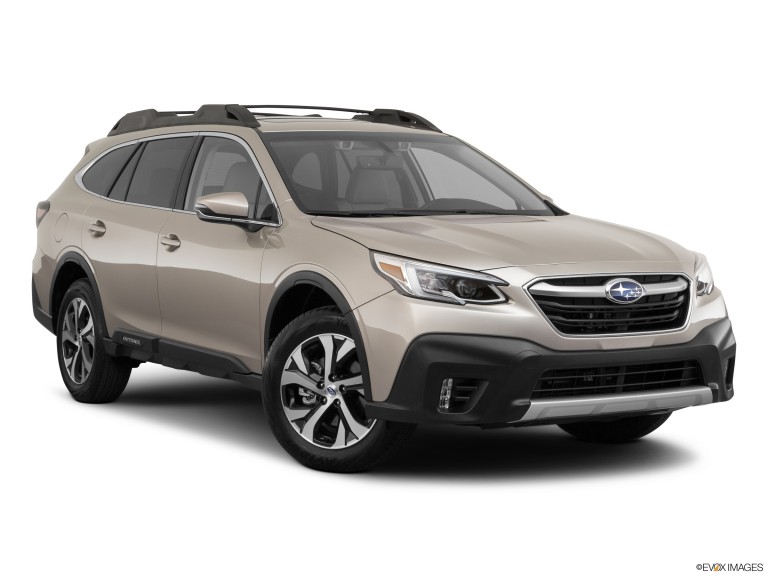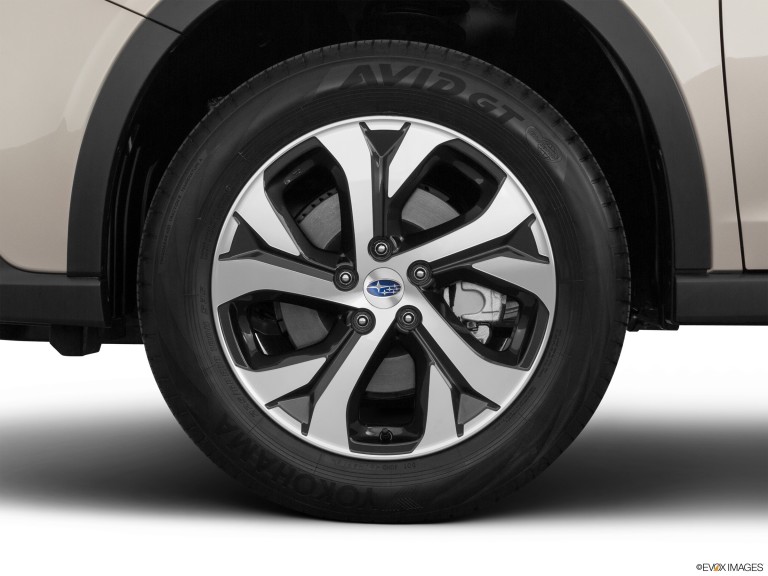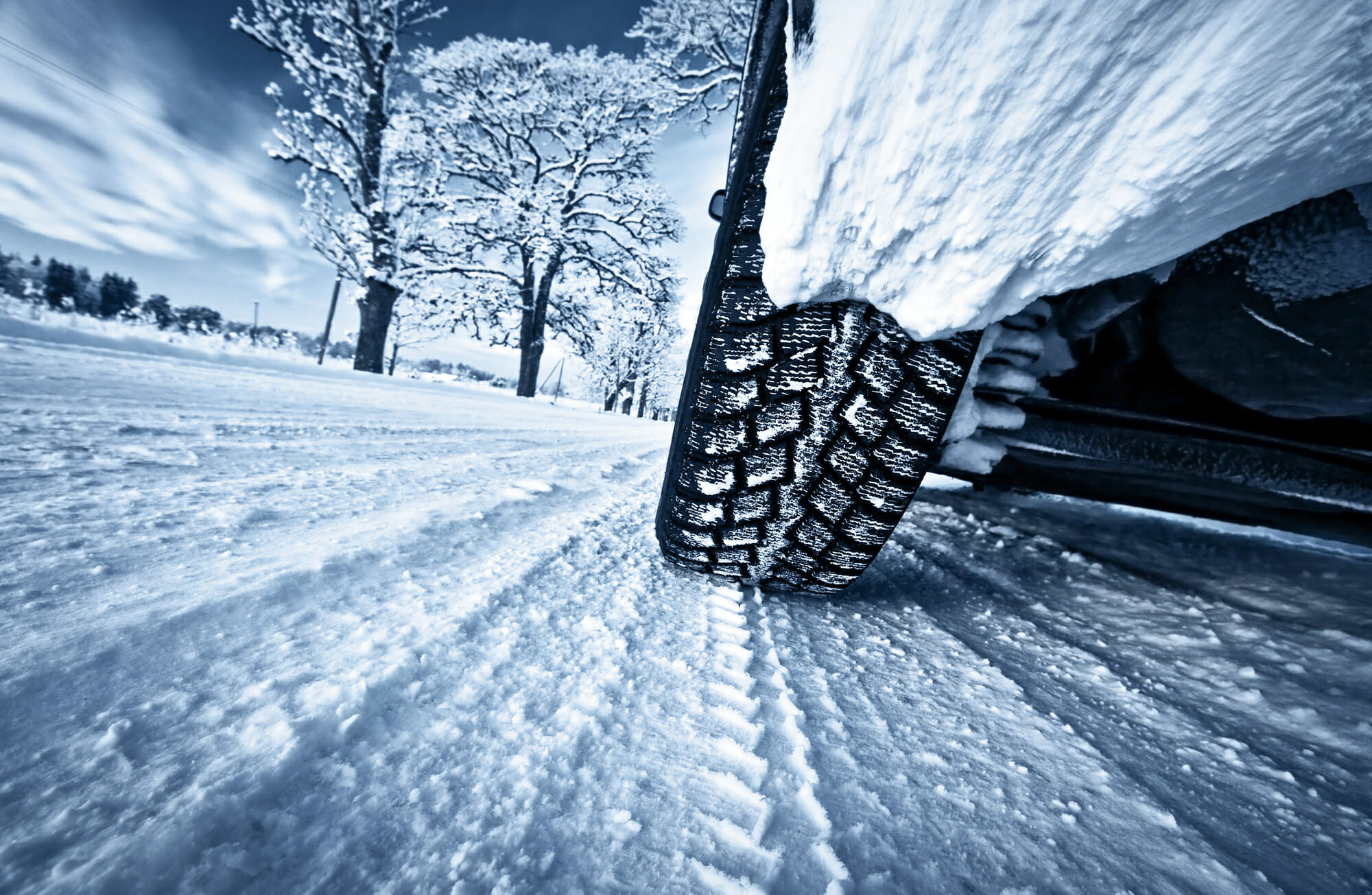Known for its sporty feel and solid handling, the Subaru Outback can easily be a favorite of today’s discerning driver (it also has some nice interior features if you’re looking to buy one). Yet finding the best Subaru Outback tires available is a must to maintain that performance.
What are the best tires for the 2020 Subaru Outback?
- Touring: Bridgestone Turanza QuietTrack – $159.99/tire
- Performance: Sumitomo HTR A/S P03 – $104.99/tire
- All-terrain: Pirelli Scorpion All Terrain Plus – $174.70/tire
- Winter/snow: Bridgestone Blizzak WS90 – $136.79/tire

That’s a big price range and a lot of options. How do you know what to buy? It’s important to look beyond costs and manufacturers to find the right tires for your specific vehicle.
Best Tires for the 2020 Subaru Outback

One of the decisions you’ll need to make is the type of tire to buy. Each of these types has numerous subtypes. (It can get confusing!) To choose, think about the type of driving you do, key features you want to see improved, and even where you live.
Touring – $159.99/Tire
Touring tires have an asymmetrical tread pattern. As a result, there are various points of contact, but not a lot of voids. The benefit is improved handling and responsiveness. In the Outback, you’ll feel like the car is turning and moving more easily overall with these tires.
Touring tires offer reliable all-season traction. With the big and heavy Outback, that’s typically enough to see a good level of improved grip. It’s not likely you’ll slip much with these tires, though they do not do as well as some others.
For Outback drivers, the touring tire lineup is a solid option for performance, but will not necessarily help you plow through the snow and ice. They do have a decent life span, though some qualities may not provide as good a result as others do.
Customer reviews for touring tires are important to look for as they shed light on the tire’s true performance. Solid reviews note comfortable driving with less slipping and sliding during the winter months.
Performance – $104.99/Tire
Performance tires for the Subaru Outback need to be chosen carefully. Look for those specifically designed for light truck or SUV performance. With those, you’ll see a difference in the overall handling and control of your car.
Performance tires are a step up from your base model vehicle, but they offer a number of key advantages to drivers in the Outback. First, they do better in all-season driving (wet and dry), and they work well for high speeds compared to touring tires.
When buying performance tires for your Outback, look for those types that extend ride comfort and keep tread wear at a minimum. That’s a key part of long-term reliability, and it makes the increased price more worthwhile.
Consumers report significant improvement in these tires over others. For example, they tend to be a solid buy when you want to add a sporty feel to the car. Some consumers see the ride quality improvement right away. Others may not, due to inferior quality in some brands.
All-Terrain – $174.70/Tire
It’s a wise decision to buy all-terrain tires if you plan to do some off-roading. When you bought your Subaru Outback, you may have planned to do this often. Even if you don’t, it’s a good idea to keep high-quality tires onboard if you find yourself on a dirt road.
All-terrain tires have excellent traction for off-road conditions. Some do better in wet and muddy conditions than others do. If you use your Outback on the job site, look for a commercial traction grade for these tires to see even more improvement.
These tires do work well on paved surfaces as well. You can expect them to be reliable overall for day-to-day driving, but if you’re never off-pavement, they may not be worth your investment. They do well in the winter as well and have good to great wear life.
Customers who buy all-terrain tires report solid performance through snow, dirt and gravel. They do well in mud if you buy the right version. Some note these tires are a better option for dependability in rough conditions or changing road conditions.
Winter/Snow – $136.79/Tire
Winter and snow tires are going to boost your Outback’s performance during the winter months. This large, heavy SUV isn’t likely to slip too much, but these bigger tires will get you through snowbanks and likely keep you on the road in slippery conditions.

If you live in an area where the streets are covered with snow most of the season, winter tires are a must. You may also want to choose studded snow tires, which feature metal spikes that grip even better. In many areas, these are illegal to use, though.
Most winter tires do well in both clear road conditions and in situations where the road is dicey. It’s a good idea to look for those with the biggest voids and an aggressive tread pattern, as that’s what’s going to deliver better overall performance in all weather.
People Also Ask
Choosing the best Subaru Outback tires is a good first step. Now, let’s answer questions about these tires overall.
Does the 2020 Subaru Outback come with a spare tire?
Yes, the Outback contains a spare tire. Keep in mind that this is a full-size spare in most trims. However, it does not provide the same abilities for towing and capacity. Use it just for overall emergency use until you can get your tire fixed.
In most trims, the spare tire is located under the floorboards in the cargo area of the vehicle. Move the carpeting to find the wheel well. You’ll have to unscrew the bolt on the spare tire to loosen it.
This area should also have all of the tools you need to change a tire on the Subaru Outback.
What’s the recommended tire pressure for a 2020 Subaru Outback?
Both wheel sizes for the Subaru Outback for 2020 have the same recommended tire inflation. This is 35 pounds per square inch for the front tire and 33 psi for the rear tire. Keep in mind, this is accurate as long as the tires are in line with original equipment tire sizing.
How do you reset the tire pressure indicator on a 2020 Subaru Outback?
Most often, if you fill the tire to the proper pressure, it will reset on its own. It may take driving the car at 25 mph for at least 10 minutes to get to that point, though.
If that does not work, turn the ignition to the “II” position, but don’t start the engine. Then, work through the display to the Settings screen. You’ll find the TPMS option located here. Select this to encourage the car to recalibrate the sensors.
Note that if it fails, you may have to go to the dealership to have a reset completed on the vehicle.